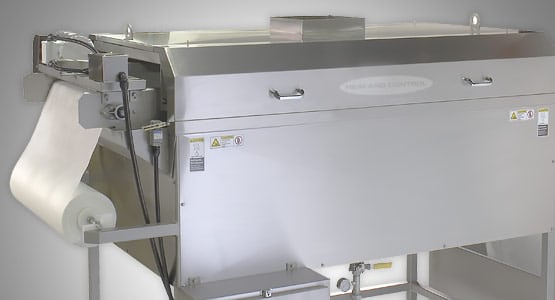Digital cutting enables manufacturers to incorporate delicate and oddly-shaped parts made of a variety of materials into advanced product designs.
Cutting is a versatile process used to shape materials, such as rubber, textile, foam, paper, plastic, composites, and foils, by trimming, forming, and shearing. For many decades, die-cutting has been the standard manufacturing method that allowed manufacturers to achieve high-volume production of components that previously took longer or were more expensive to make using other techniques.
The process involves the use of tooling called a die. A die is a specialized tool with sharp edges shaped according to the two-dimensional shape of the desired finished part. The die is used to pierce the material and to punch out a shaped part that meets specific dimensions and tolerances, not unlike an industrial cookie-cutter.
Basics and Capabilities of the Die-Cutting Process
Die-cutting originated in the middle of the 19th century when the process was developed as a way of modernizing the shoemaking industry. Before the invention of die-cutting, manual labor was utilized to outline and cut the soles of the shoes. The manual cutting process was time-consuming, resulting in low productivity.
The invention of die-cutting allowed the shoemakers to replicate and standardize the sizes of the soles. Through years of development and innovation, the application of die-cutting extended and revolutionized other sectors, such as packaging, consumer goods, and automotive. As a result of the increasing demand for more complex product designs, die-cutting is still evolving and allows even small companies to achieve high-volume production runs as needed without sacrificing the quality of each item.
There are virtually no limits to the possible cut shapes as the die tool can be tailored for each specific job. The ability to rapidly cut a wide variety of custom shapes is one of the essential advantages of the die-cutting process. Once a die has been created, it can be used to produce a huge number of identical shapes. However, custom die fabrication can be costly (especially for more convoluted shapes) and the cost needs to be offset by using the die in large-volume production runs.
Types of Die-Cutting Manufacturing Processes
Die-cutting exists in many forms that can be divided into two groups – flat-bed die-cutting and rotary die-cutting. The rotary die-cutting process uses a rotary-die press and custom-built cylindrical dies. This manufacturing process enables rapid material cutting as a continuous sheet of relatively thin material (typically up to one millimeter) material can be fed into the press.
Read more: An Overview of Digital Cutting in Materials Manufacturing









